2.12.14 La Vida Loca(vore)
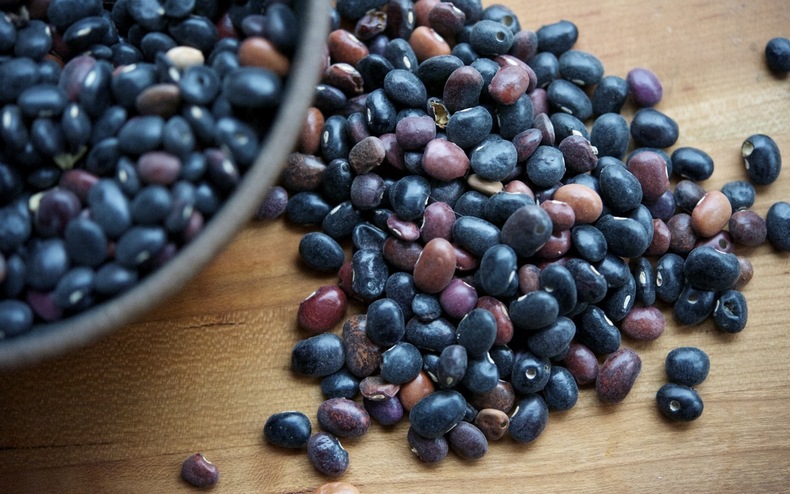
photos by george billard
Globalization means that you can buy Pringles wherever you travel. That plastic is the default material, even in the jungle. And that, no matter where you roam, a hamburger is not far away. But in rural Oaxaca, the locals have little money for these indulgences and outside influences are still regarded with suspicion. The indigenous Zapotecs live very close to how they have for centuries, farming the same crops as their ancestors and hunting and gathering in terrains virtually unchanged. It's a highly sustainable lifesytle, when avocados and pomegranates drip from the trees in your courtyard, and beans, corn and squash grow in the fields out back. A couple of goats or a cow provide milk, then cheese—the local quesillo is sort of like mozzarella—and, eventually, meat. These people don't have a lot, but they really make the most of it and they're proud of their traditions. I tried to sample as many local foods as I could, and it wasn't hard since those are what's featured in all the markets and restaurants. You don't exactly go out for Chinese when you're in Oaxaca.
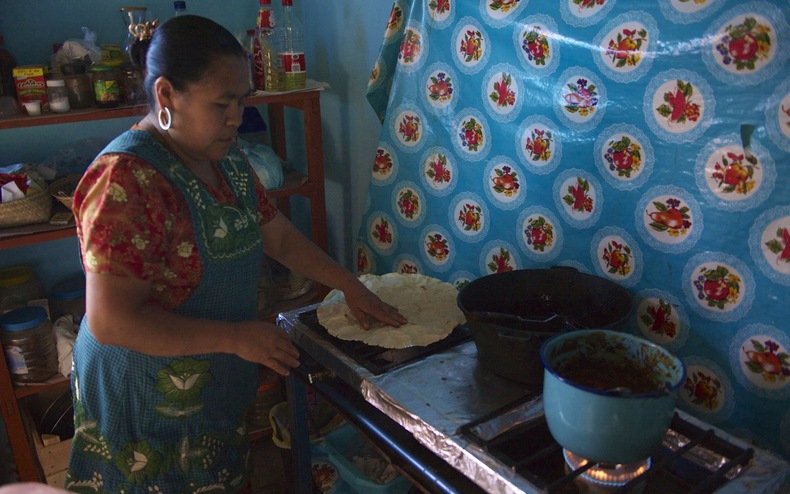
yes masa
The extra-large tortilla you see above is actually a tlaydua, a Oaxacan staple that is made of cornmeal masa and toasted on a comal (clay griddle) or stove until leathery or crunchy, then loaded up with all manner of toppings, almost like a pizza. Women bring tall stacks of these wrapped in cloths to sell in the markets.
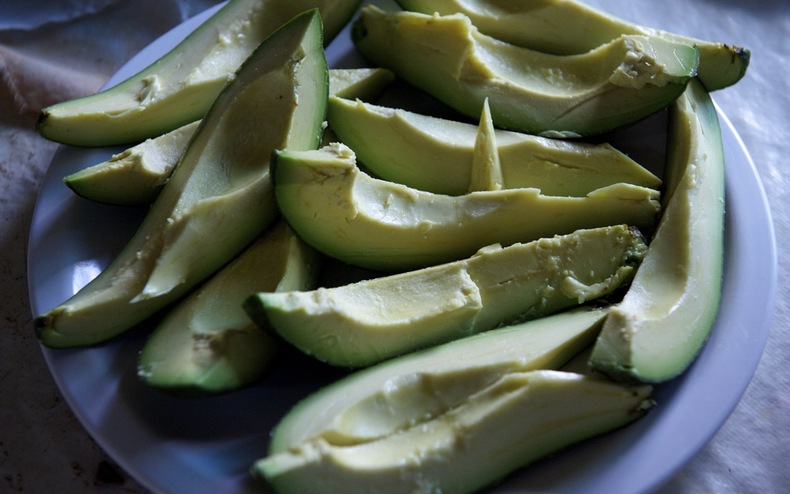
like butter
The local avocados are absolutely delicious and plentiful, as you can see by the generous serving, above. There is even a variety, the criollo, with skin so thin it, too, is edible. The leaves of the avocado (fresh and dried) are used to infuse beans, soups and casseroles with their subtle anise flavor. Those that exhibit a bumpy, wart-like growth (fungus?) are apparently prized for their superior taste.

high protein snack
Grasshoppers are eaten all over Mexico but especially in Oaxaca, where the chapulines are toasted on the comal and often seasoned with garlic, lime juice and sal de gusano ("worm" salt). They come in a variety of sizes, from about as big as your pinky to very tiny, and are enjoyed out of hand as a snack or sprinkled on quesadillas and tlayudas. They're also a cheap source of protein. But did you try them? you're thinking. Of course I did, despite my extreme aversion to anything with an exoskeleton (ie cockroaches, soft-shell crabs). And once was enough.
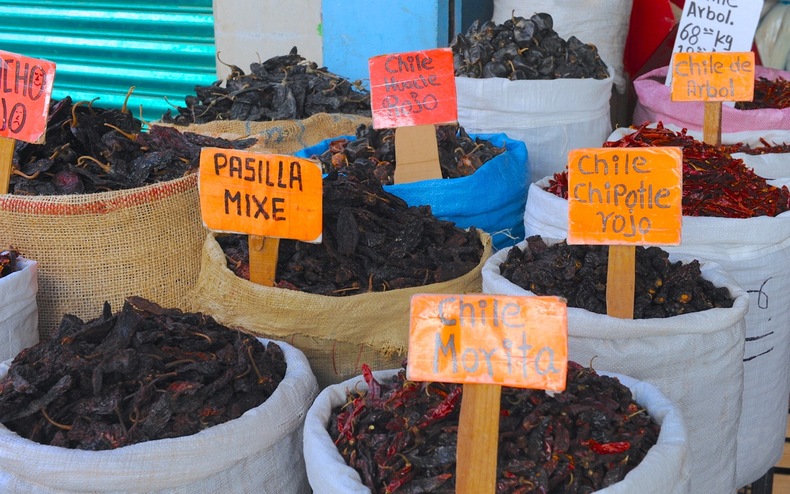
chile today
This is a sight you would expect to see in Mexico, of course, where the chile is such an essential component to the authentic cuisine. The many varieties are used singly and in combination to create salsas of every color and intensity. Unlike the moles that require such a plethora of ingredients—nuts, sesame seeds, chocolate, spices—and so much grinding, salsas are really quite simple. You toast chiles lightly in a skillet, soak them in water until they're pliable and then put them in a blender with water, salt, a little oil and maybe some garlic and oregano. The result is silky, spicy, floral and addictive.
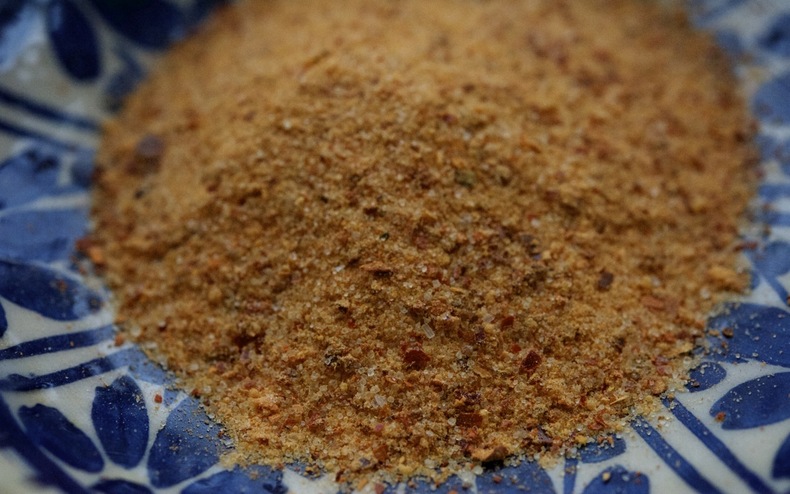
as the worm turns
The sal de gusano is ubiquitous, sold on the street and in markets, mostly by little old ladies. (I wrote a bit about it here, and included a cocktail recipe in which it rims the glass.) Its namesake worm is actually the reddish larva from a type of moth that can infect the agave plant. It's toasted so it has a smoky flavor that blends with its natural umami savoriness, and then it's blended with salt and chile. A pinch is sometimes taken with a shot of mezcal, though true connoisseurs find this gratuitous. Try it sprinkled on fresh mango or melon and you'll be hooked.
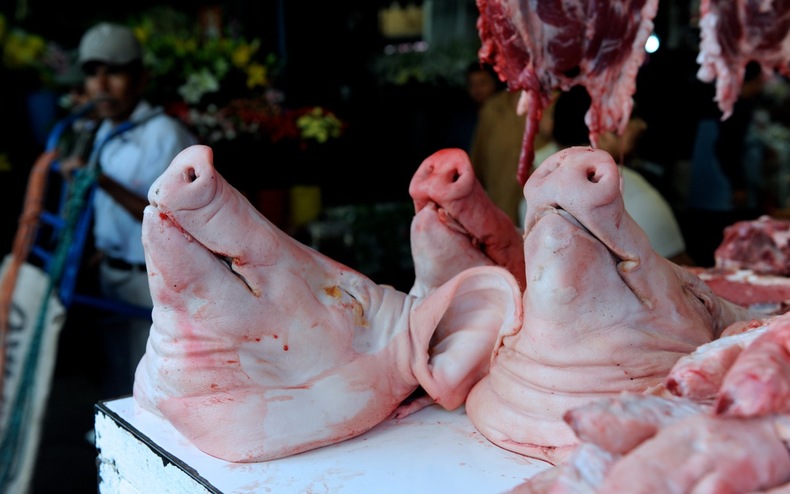
pig-headed
There's a great deal of meat in Oaxacan cooking, lots of pork and beef, but also goat and lamb. It has pride of place in the markets, with stall after stall selling the same cuts of cecina (thin, pre-seasoned pork filets), tasajo (beef strips) and scarlet garlands of chorizo sausage. Nose-to-tail eating is a practical reality in the Third World, and these pigs' heads are a key ingredient in pozole, that fortifying hominy stew. Incidentally, the meat markets in Oaxaca are surprisingly odor-free, with few of the flies you might expect to see.
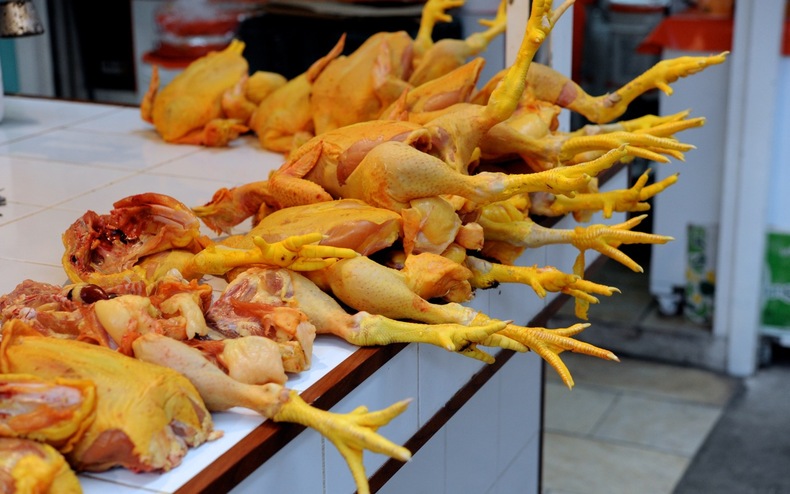
fowl play
The deep yellow skin of these chickens indicates that they grew up sunbathing and enjoying a nutritious diet. Of course, they come with the feet intact since these are a valuable source of nutrition. I always make my stock with chicken feet (from local birds) and the result is golden and full of gelatin.
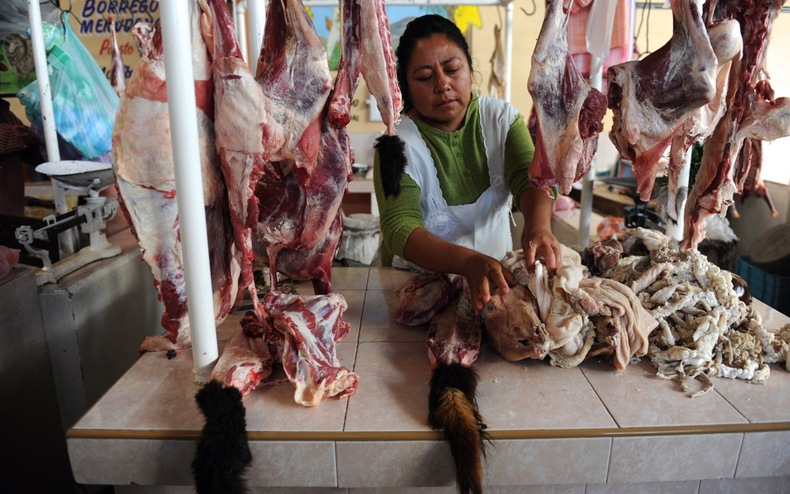
culinary tails
Although we had earmarked a nearby restaurant for lunch when we visited the indigenous market on Sunday in Tlacolula, we wound up eating with the locals, who sit down for barbacoa de chivo (goat barbecue) right inside the market. First we passed through the stalls where the fresh goat meat is for sale. As you can see, every part of the animal is on offer. (I'm not quite sure why the tails are left on—to indicate freshness? Or possibly to distinguish sheep from goat?) Then you sit down elbow-to-elbow with friendly strangers and order the goat's head soup—a deeply flavorful broth full of chunks of tender meat—or tacos of shredded meat rolled inside soft corn tortillas. I had the former, G had the latter and we both garnished liberally with cilantro, radishes, avocado and pico de gallo (fresh tomato salsa). It was truly divine.
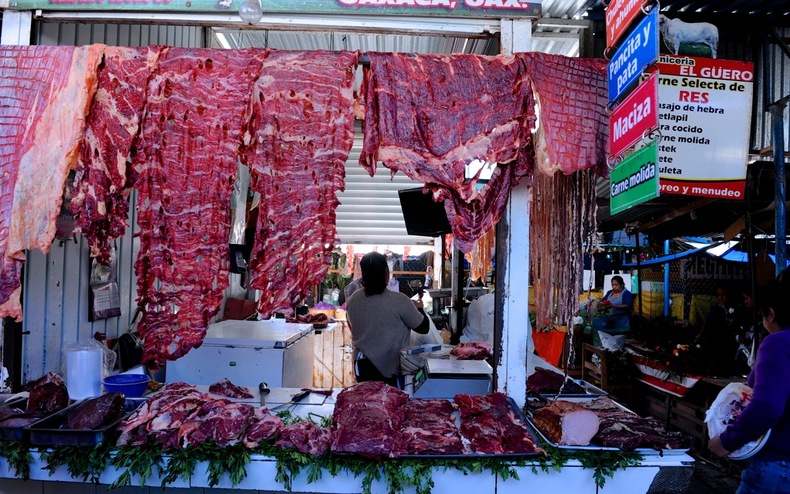
meat sheets
At the 20 de noviembre market in Oaxaca City, the preferred cuts of meat are these very thin sheets of beef and pork that are tossed on the grill for a quick sizzle. The pork comes already seasoned with a mild red chile rub.
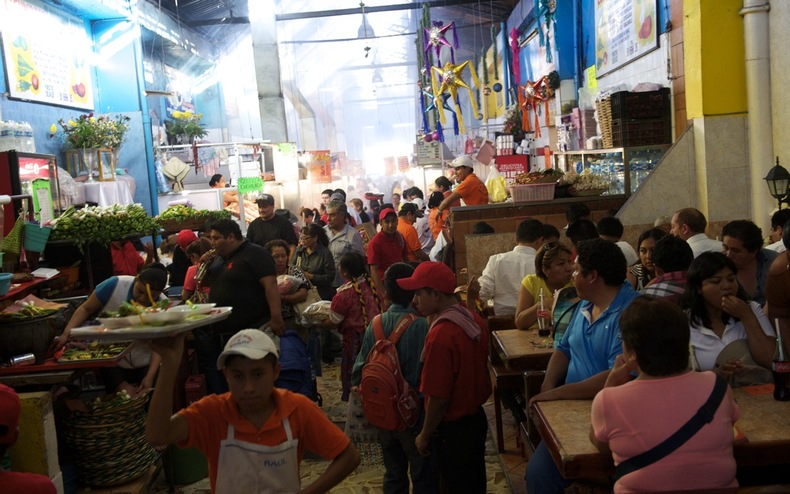
food court
You walk through the stalls, choose your purveyor and place your order. Your meat is then ferried directly to the grills where it is cooked on the spot and brought to you at your table along with the requisite accompaniments, including...
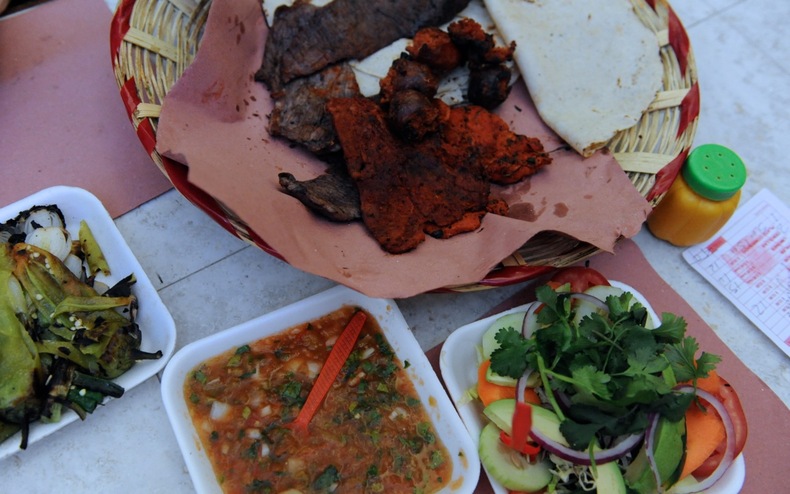
nice grill
...grilled onions, pico de gallo and fresh vegetables, all of which you fold with the meat into an endless stack of warm corn tortillas. You can see why we often had no room for dinner!
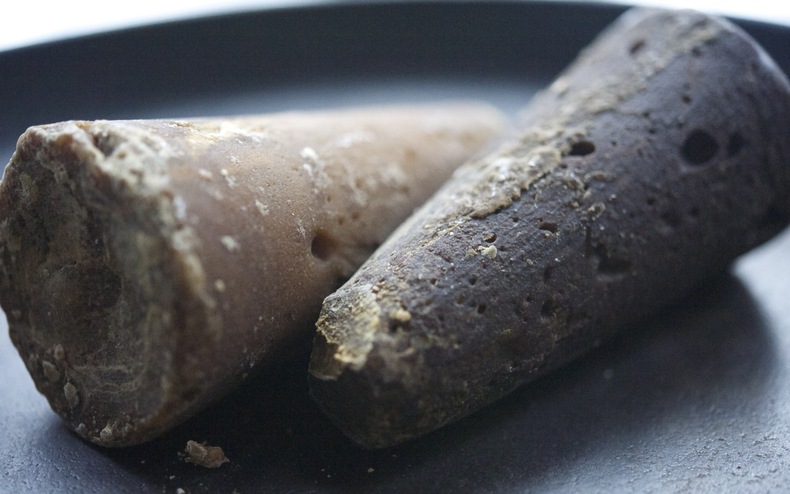
sugar cones
The markets were full of interesting ingredients, from freshly roasted cacao beans to huitlacoche (corn smut aka Mexican truffle) to pickled agave flowers. Above is piloncillo, literally "little pylons," so-named for the cone shape. This is unrefined whole cane sugar, made by simply boiling and evaporating sugarcane juice. It's quite similar to Indian jaggery, with deep caramel and molasses overtones. A natural partner for meat, beans and chile, its assertive flavor also pairs beautifully with highly perfumed fruits like pineapple and guava, and with the local drinking chocolate.
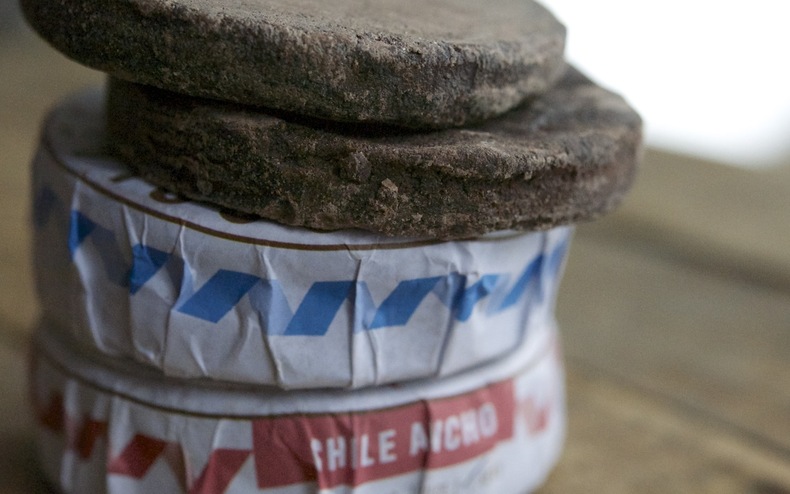
food of the gods
This toasty, fruity chocolate is not to be missed. The earliest documented use of cacao is around 1100 BC by the Olmecs, indigenous people of south central Mexico, not far from Oaxaca. The Aztecs made it into a beverage they called xocolatl, a Nahuatl word meaning "bitter water." Unsweetened chocolate is still an essential ingredient in the region's complex moles, but it is also blended with sugar, ground almonds and sometimes spices like cinnamon, anise and chile for the classic hot drink. (Taza is a good domestic source for the authentic stuff.) With a base of either hot milk or water, the chocolate is whipped to a silken froth with a special carved wooden tool called a molinillo, though a whisk does a passable job. You can concoct your own version at home, using some combination of dark chocolate and/or cocoa powder, and adding ground almonds, if you like, or perhaps making it with almond milk.
I can't think of a better way to spoil your sweetheart on Valentine's Day than with a morning cup of this seductive brew.
I can't think of a better way to spoil your sweetheart on Valentine's Day than with a morning cup of this seductive brew.
Spiced Hot Chocolate
serves 1
- — 4 ounces Mexican chocolate, or substitute bittersweet chocolate or 2 tablespoons cocoa
- — 4 ounces almond meal, optional
- — piloncillo, coconut or light brown sugar, to taste
- — 1/2 teaspoon vanilla extract
- — pinch sea salt
- — generous pinch ground cinnamon
- — pinch ground cayenne, or other chile
- — pinch ground anise, optional
- — 1 1/2 cups whole milk, nut milk or water
In a small saucepan, boil water or warm milk over medium heat until it steams. If using raw nut milk, do not heat above 118 degrees.
Stir in dry ingredients and whisk vigorously until frothy. Serve immediately.
 Download Recipe
Download Recipe






13 Comments